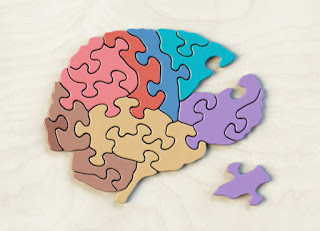8 Myths About the Brain
While researchers are still uncovering the secrets of how the brain works, they have discovered plenty of information about what goes on inside your head. Unfortunately, there are still a lot of brain myths out there.
The following are just a few of the many myths about the brain:
Myth 1: We Use 10% of our Brains
Fact: You've probably heard this oft-cited bit of information several times, but constant repetition does not make it any more accurate. People often use this popular urban legend to imply that the mind is capable of much greater things, such as dramatically increased intelligence, psychic abilities, or even telekinesis.
If the 10% myth were true, brain damage would be far less likely—after all, we would only have to worry about that tiny 10% of our brains being injured.
The fact is that damage to even a small area of the brain can result in profound consequences for both cognition and functioning.1 Brain imaging technologies have also demonstrated that the entire brain shows levels of activity, even during sleep.
Myth 2: Brain Damage Is Permanent
Fact: The brain is fragile and can be damaged by things such as injury, stroke, or disease. This damage can result in a range of consequences, from mild disruptions in cognitive abilities to complete impairment. Brain damage can be devastating, but is it always permanent?
While we often tend to think of brain injuries as lasting, a person's ability to recover from such damage depends upon the severity and the location of the injury. For example, a blow to the head during a football game might lead to a concussion. While this can be quite serious, most people can recover when given time to heal. A severe stroke, on the other hand, can result in dire consequences to the brain that can very well be permanent.
However, it is important to remember that the human brain has an impressive amount of plasticity. Even following a serious brain event, such as a stroke, the brain can often heal itself over time and form new connections.
Myth 3: People Are Right- or Left-Brained
Fact: Have you ever heard someone describe themselves as either left-brained or right-brained? This stems from the popular notion that people are either dominated by their right or left brain hemispheres. According to this idea, people who are "right-brained" tend to be more creative and expressive, while those who are "left-brained" tend to be more analytical and logical.
While experts do recognize that there is lateralization of brain function (that is, certain types of tasks and thinking tend to be more associated with a particular region of the brain), no one is fully right-brained or left-brained.
In fact, we tend to do better at tasks when the entire brain is utilized, even for things that are typically associated with a certain area of the brain.
Myth 4: Humans Have the Biggest Brains
Fact: The human brain is quite large in proportion to body size, but another common misconception is that humans have the largest brains of any organism. How big is the human brain? How does it compare to other species?
The average adult has a brain weighing in at about three pounds and measuring up to about 15 centimeters in length. The largest animal brain belongs to that of a sperm whale, weighing in at a whopping 18 pounds! Another large-brained animal is the elephant, with an average brain size of around 11 pounds.
But what about relative brain size in proportion to body size? Humans must certainly have the largest brains in comparison to their body size, right? Once again, this notion is also a myth. Surprisingly, one animal that holds the largest body size to brain ratios is the shrew, with a brain making up about 10% of its body mass.
Myth 5: Brain Cells Die Permanently
Fact: Traditional wisdom has long suggested that adults only have so many brain cells and that we never form new ones. Once these cells are lost, are they gone for good?
In recent years, experts have discovered evidence that the human adult brain does indeed form new cells throughout life, even during old age.
The process of forming new brain cells is known as neurogenesis and researchers have found that it happens in at least one important region of the brain called the hippocampus.
Myth 6: Drinking Alcohol Kills Brain Cells
Fact: Partly related to the myth that we never grow new neurons is the idea that drinking alcohol can lead to cell death in the brain. Drink too much or too often, some people might warn, and you'll lose precious brain cells that you can never get back. We've already learned that adults do indeed get new brain cells throughout life, but could drinking alcohol really kill brain cells?
While excessive or chronic alcohol abuse can certainly have dire health consequences, experts do not believe that drinking causes neurons to die.
Myth 7: There Are 100 Billion Neurons in the Human Brain
Fact: The estimate of 100 billion neurons has been repeated so often and so long that no one is completely sure where it originated. In 2009, however, one researcher decided to count neurons in adult brains and found that the number was just a bit off the mark. Based on research, it appears that humans brain contain closer to 85 Billion neurons.
Myth 8: Stay connected......





Comments
Post a Comment